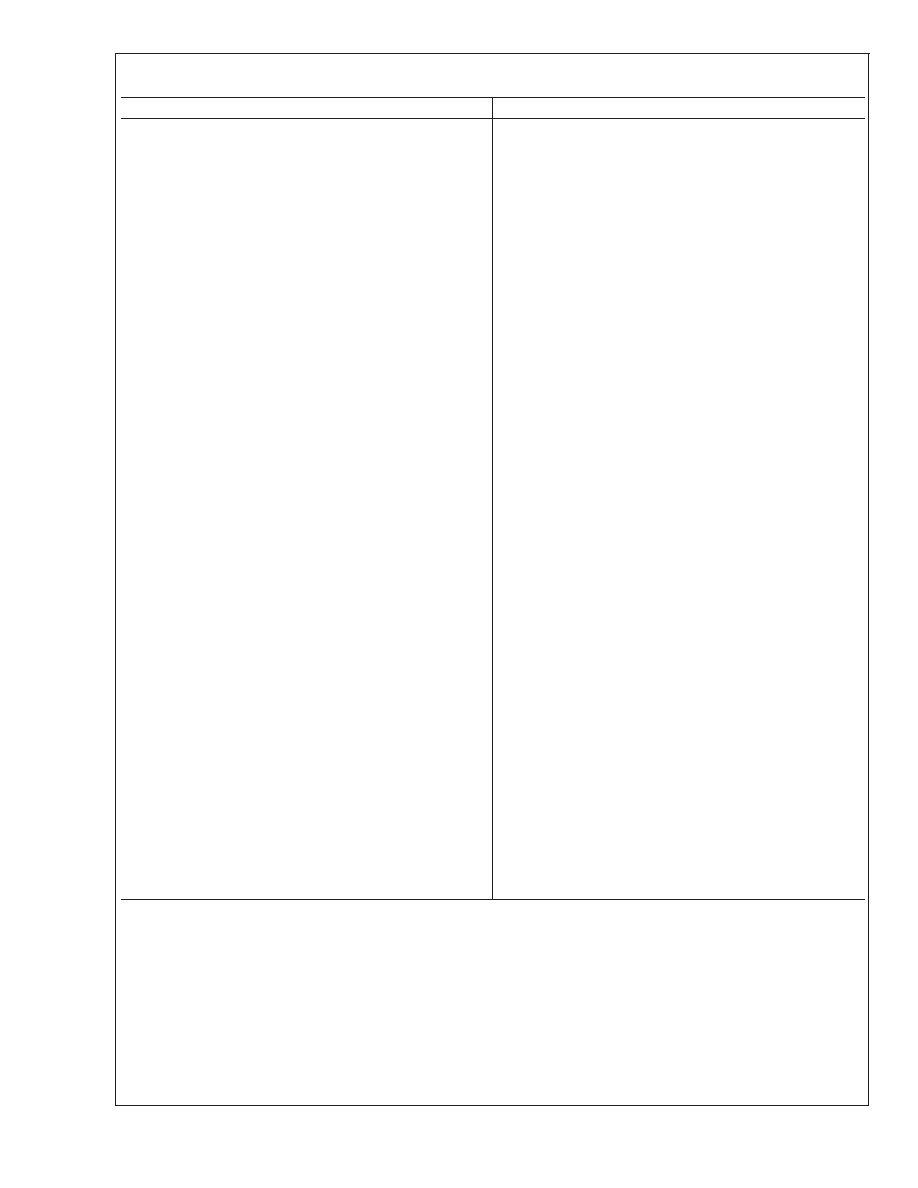- 您現(xiàn)在的位置:買賣IC網(wǎng) > PDF目錄30746 > LM2575N-5.0EP (NATIONAL SEMICONDUCTOR CORP) 3.2 A SWITCHING REGULATOR, 63 kHz SWITCHING FREQ-MAX, PDIP16 PDF資料下載
參數(shù)資料
| 型號: | LM2575N-5.0EP |
| 廠商: | NATIONAL SEMICONDUCTOR CORP |
| 元件分類: | 穩(wěn)壓器 |
| 英文描述: | 3.2 A SWITCHING REGULATOR, 63 kHz SWITCHING FREQ-MAX, PDIP16 |
| 封裝: | DIP-16 |
| 文件頁數(shù): | 4/26頁 |
| 文件大小: | 1069K |
| 代理商: | LM2575N-5.0EP |
第1頁第2頁第3頁當(dāng)前第4頁第5頁第6頁第7頁第8頁第9頁第10頁第11頁第12頁第13頁第14頁第15頁第16頁第17頁第18頁第19頁第20頁第21頁第22頁第23頁第24頁第25頁第26頁

LM2575EP Series Buck Regulator Design Procedure
PROCEDURE (Fixed Output Voltage Versions)
EXAMPLE (Fixed Output Voltage Versions)
Given: V
OUT = Regulated Output Voltage (3.3V, 5V, 12V, or
15V) V
IN(Max) = Maximum Input Voltage ILOAD(Max) =
Maximum Load Current
Given: V
OUT =5VVIN(Max) = 20V ILOAD(Max) = 0.8A
1. Inductor Selection (L1) A. Select the correct Inductor
value selection guide from Figures 3, 4, 5, 6 (Output
voltages of 3.3V, 5V, 12V or 15V respectively). For other
output voltages, see the design procedure for the adjustable
version. B. From the inductor value selection guide, identify
the inductance region intersected by V
IN(Max) and
I
LOAD(Max), and note the inductor code for that region. C.
Identify the inductor value from the inductor code, and
select an appropriate inductor from the table shown in
Figure 9. Part numbers are listed for three inductor
manufacturers. The inductor chosen must be rated for
operation at the LM2575EP switching frequency (52 kHz)
and for a current rating of 1.15 x I
LOAD. For additional
inductor information, see the inductor section in the
Application Hints section of this data sheet.
1. Inductor Selection (L1) A. Use the selection guide
shown in Figure 4. B. From the selection guide, the
inductance area intersected by the 20V line and 0.8A line is
L330. C. Inductor value required is 330 H. From the table
in Figure 9, choose AIE 415-0926, Pulse Engineering
PE-52627, or RL1952.
2. Output Capacitor Selection (C
OUT)A. The value of the
output capacitor together with the inductor defines the
dominate pole-pair of the switching regulator loop. For
stable operation and an acceptable output ripple voltage,
(approximately 1% of the output voltage) a value between
100 F and 470 F is recommended. B. The capacitor’s
voltage rating should be at least 1.5 times greater than the
output voltage. For a 5V regulator, a rating of at least 8V is
appropriate, and a 10V or 15V rating is recommended.
Higher voltage electrolytic capacitors generally have lower
ESR numbers, and for this reason it may be necessary to
select a capacitor rated for a higher voltage than would
normally be needed.
2. Output Capacitor Selection (C
OUT)A. COUT = 100 F
to 470 F standard aluminum electrolytic. B. Capacitor
voltage rating = 20V.
3. Catch Diode Selection (D1) A. The catch-diode current
rating must be at least 1.2 times greater than the maximum
load current. Also, if the power supply design must
withstand a continuous output short, the diode should have
a current rating equal to the maximum current limit of the
LM2575EP. The most stressful condition for this diode is an
overload or shorted output condition. B. The reverse voltage
rating of the diode should be at least 1.25 times the
maximum input voltage.
3. Catch Diode Selection (D1) A. For this example, a 1A
current rating is adequate. B. Use a 30V 1N5818 or SR103
Schottky diode, or any of the suggested fast-recovery
diodes shown in Figure 8.
4. Input Capacitor (C
IN) An aluminum or tantalum
electrolytic bypass capacitor located close to the regulator is
needed for stable operation.
4. Input Capacitor (C
IN) A 47 F, 25V aluminum electrolytic
capacitor located near the input and ground pins provides
sufficient bypassing.
LM2575EP/LM2575HVEP
www.national.com
12
相關(guān)PDF資料 |
PDF描述 |
|---|---|
| LM2575HVMX-12EP | 3.2 A SWITCHING REGULATOR, 63 kHz SWITCHING FREQ-MAX, PSSO5 |
| LM2575HVM-5.0EP | 3.2 A SWITCHING REGULATOR, 63 kHz SWITCHING FREQ-MAX, PSSO5 |
| LM2575SX-15EP | 3.2 A SWITCHING REGULATOR, 63 kHz SWITCHING FREQ-MAX, PSSO5 |
| LM2575MX-5.0EP | 3.2 A SWITCHING REGULATOR, 63 kHz SWITCHING FREQ-MAX, PDSO24 |
| LM2575S-12EP | 3.2 A SWITCHING REGULATOR, 63 kHz SWITCHING FREQ-MAX, PSSO5 |
相關(guān)代理商/技術(shù)參數(shù) |
參數(shù)描述 |
|---|---|
| LM2575NADJ | 制造商:NATIONAL 功能描述:* |
| LM2575N-ADJ | 功能描述:直流/直流開關(guān)轉(zhuǎn)換器 RoHS:否 制造商:STMicroelectronics 最大輸入電壓:4.5 V 開關(guān)頻率:1.5 MHz 輸出電壓:4.6 V 輸出電流:250 mA 輸出端數(shù)量:2 最大工作溫度:+ 85 C 安裝風(fēng)格:SMD/SMT |
| LM2575N-ADJ/NOPB | 功能描述:直流/直流開關(guān)轉(zhuǎn)換器 RoHS:否 制造商:STMicroelectronics 最大輸入電壓:4.5 V 開關(guān)頻率:1.5 MHz 輸出電壓:4.6 V 輸出電流:250 mA 輸出端數(shù)量:2 最大工作溫度:+ 85 C 安裝風(fēng)格:SMD/SMT |
| LM2575R | 制造商:HTC 制造商全稱:HTC Korea TAEJIN Technology Co. 功能描述:1A, 52kHz, Step-Down Switching Regulator |
| LM2575S | 制造商:SEMTECH 制造商全稱:Semtech Corporation 功能描述:1A & 3A Miniconverter Switching Regulators |
發(fā)布緊急采購,3分鐘左右您將得到回復(fù)。